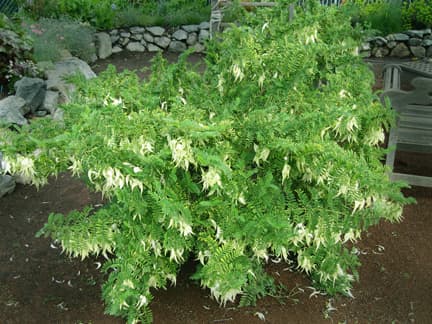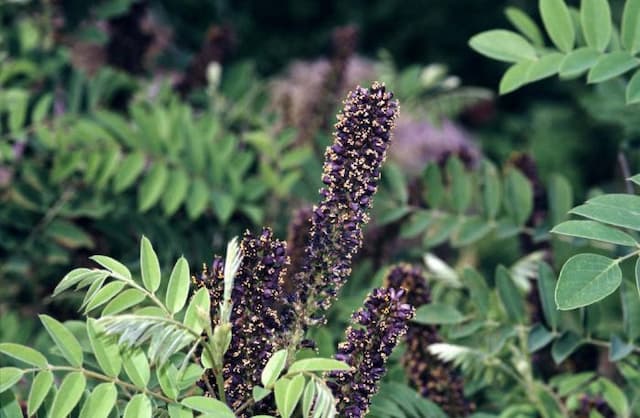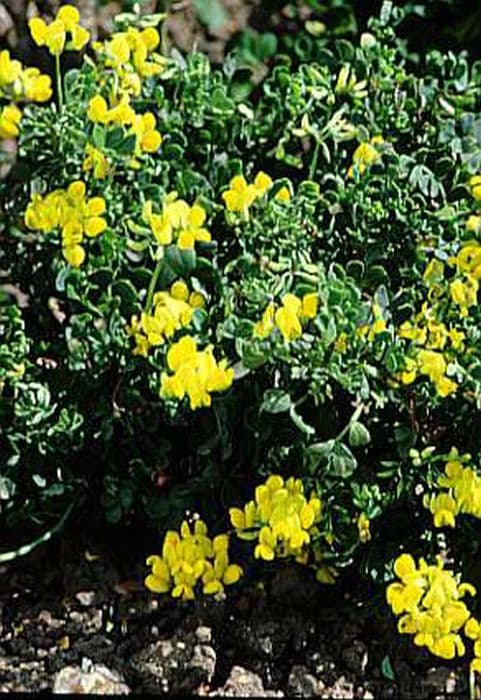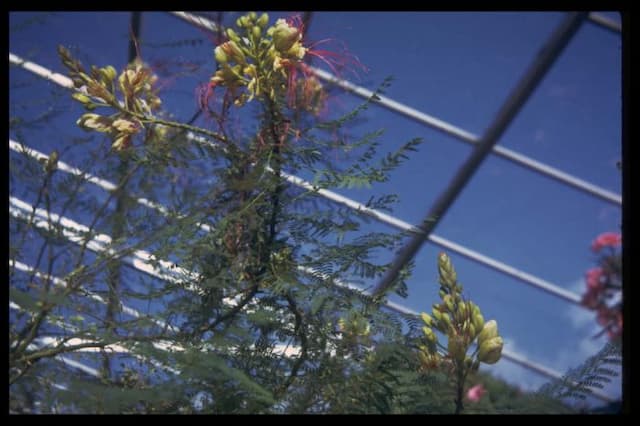Red clover Trifolium pratense

ABOUT
Trifolium pratense, commonly known as red clover, is a perennial herbaceous plant featuring trifoliate leaves, which means each leaf comprises three leaflets. These leaflets are generally oval-shaped with a subtle chevron pattern of a lighter color, typically white or silver, that marks the green leaves. The leaflets can have a slightly serrated edge, giving them a textured feel. Red clover is known for its charming flowers that form dense, globular heads. These blooms are a deep pink to a purplish-pink hue and attract a variety of pollinators. The flowers are composed of numerous small, tubular florets that offer a feathery and fuzzy appearance. These flower heads typically have a modest size and arise on elongated stalks from the base of the plant foliage. The plant's overall structure forms a spreading mat or small mounding clumps. Its stems are somewhat hairy, and the entire plant exudes a fresh, sweet grassy fragrance when crushed or brushed against. This distinct scent often pulls in nearby insect life, further enlivening its surroundings. Red clover is frequently found gracing meadows, roadsides, and pastures, contributing to the burst of color and life in these environments.
About this plant
 Names
NamesFamily
Fabaceae.
Synonyms
Red Clover, Cow Clover, Meadow Clover, Wild Clover.
Common names
Trifolium pratense var. frigidum, Trifolium pratense var. maritimum, Trifolium pratense var. sativum, Trifolium sativum.
 Toxicity
ToxicityTo humans
Trifolium pratense, commonly known as red clover, is not generally considered toxic to humans. However, consuming large quantities of red clover can potentially lead to side effects due to isoflavones present in the plant, which are phytoestrogens. Ingesting excessive amounts could cause issues in individuals with hormone-sensitive conditions such as breast, uterine, or ovarian cancer. Typical dietary consumption as part of traditional use is unlikely to cause serious issues, but caution is warranted for those with existing health concerns related to hormones.
To pets
Red clover, commonly referred to as such, is generally considered to be non-toxic to pets as well. While it is not commonly associated with poisoning in animals, ingestion of red clover has been linked to bloating in some livestock, particularly ruminants, due to the saponin content. In pets like dogs and cats, red clover is unlikely to cause toxicity but consuming large amounts could potentially result in mild gastrointestinal upset. However, if a pet has a pre-existing condition or if you notice any adverse reactions after ingestion, it is always best to consult a veterinarian.
 Characteristics
CharacteristicsLife cycle
Perennials
Foliage type
Deciduous
Color of leaves
Green
Flower color
Pink
Height
1-2 feet (30-60 cm)
Spread
1-2 feet (30-60 cm)
Plant type
Herb
Hardiness zones
4-8
Native area
Europe, Western Asia
Benefits
 General Benefits
General Benefits- Nutrient Rich Forage: Trifolium pratense, commonly known as red clover, is often used as a forage crop for livestock due to its high nutrient content, providing a valuable source of proteins, minerals, and vitamins.
- Nitrogen Fixation: Red clover has a symbiotic relationship with nitrogen-fixing bacteria, which allows it to enrich soil fertility by converting atmospheric nitrogen into a form that plants can absorb and use.
- Soil Structure Improvement: The deep roots of red clover help to improve soil structure and reduce erosion by stabilizing the soil and increasing its organic matter content.
- Biodiversity Support: As a flowering plant, red clover provides nectar and pollen for a variety of pollinators including bees, butterflies, and other beneficial insects, supporting biodiversity in agricultural landscapes.
- Rotational Cropping: Red clover is often used in crop rotation systems to break pest and disease cycles, which can lead to healthier crops and reduced need for chemical interventions.
- Green Manure: When plowed under before maturity, red clover acts as a green manure, adding valuable organic matter and nutrients to the soil which can lead to increased yields in subsequent crops.
- Cover Cropping: As a cover crop, red clover can be used to protect bare soil from erosion during times when primary crops are not grown, also helping to suppress weeds through competition.
- Pasture Renovation: Farmers can use red clover to rejuvenate old pastures, improving the quality and productivity of grazing areas for livestock.
- Wildlife Habitat: Red clover can provide habitat and food for wildlife, particularly in agricultural areas where monocultures predominate and natural habitats are reduced.
- Aesthetic Appeal: With its colorful flowers, red clover can enhance the visual appeal of gardens, fields, and wildflower mixes, adding beauty to landscapes.
 Medical Properties
Medical Properties- Phytoestrogenic Effects: Trifolium pratense, commonly known as red clover, contains isoflavones which act as phytoestrogens in the body – compounds that can mimic the effects of estrogen.
- Menopausal Symptom Relief: It is commonly used for the relief of menopause symptoms such as hot flashes and night sweats.
- Supporting Bone Health: Red clover is thought to help in maintaining bone density, which can be beneficial during menopause when bone loss can occur.
- Cardiovascular Health: There is interest in the potential of red clover to improve cardiovascular health by improving blood flow and strengthening arterial walls.
- Anti-inflammatory Properties: Red clover is believed to possess anti-inflammatory characteristics which can be useful in the management of conditions associated with inflammation.
- Skin Health: Topically, it is sometimes used for skin inflammations and conditions like eczema and psoriasis, though evidence of its effectiveness for this purpose is limited.
- Detoxification: Red clover is traditionally used for its potential detoxifying properties, aimed at cleansing the blood.
- Respiratory Health: There is traditional use of red clover for respiratory conditions, such as whooping cough and asthma, although current evidence is limited.
 Air-purifying Qualities
Air-purifying QualitiesThis plant is not specifically known for air purifying qualities.
 Other Uses
Other Uses- Trifolium pratense, commonly known as red clover, is sometimes used as a natural fabric dye, providing a range of hues from soft golds to deep purples depending on the mordant used.
- In agricultural systems, red clover is a valuable cover crop that can improve soil structure and fertility through nitrogen fixation and organic matter addition.
- In companion planting, red clover is planted alongside crops like brassicas to deter pests, thanks to its ability to attract beneficial insects that prey on common garden pests.
- As a forage plant, red clover is an important feed for livestock, particularly cattle and sheep, providing a high-quality source of nutrients and promoting animal health.
- The flowers of red clover can be fermented to make wine or infused in hot water to create a floral, herbal tea.
- Red clover can be incorporated into natural cosmetic products like soaps and lotions for its potential skin-soothing properties.
- Farmers use red clover as a green manure, turning it into the soil to act as a fertilizer for future plantings.
- The blossoms can be candied and used as edible decorations for desserts, imparting a subtle, sweet flavor and floral aesthetic.
- In permaculture, red clover is used as a living mulch to suppress weeds, conserve soil moisture, and protect against soil erosion.
- Red clover is integrated into rotational grazing systems to replenish pastures, providing nutritious forage that promotes rapid regrowth and sustainable land management.
Interesting Facts
 Feng Shui
Feng ShuiThe Red Clover is not used in Feng Shui practice.
 Zodiac Sign Compitability
Zodiac Sign CompitabilityThe Red Clover is not used in astrology practice.
 Plant Symbolism
Plant Symbolism- Luck: Trifolium pratense, commonly known as red clover, is often associated with luck due to its rare four-leaf variant which is considered a symbol of good fortune.
- Prosperity: The abundant growth and lush appearance of red clover often symbolizes prosperity and the idea of flourishing success.
- Protection: Red clover is sometimes thought to ward off negative spirits and is used in protective charms.
- Promises: In some traditions, red clover represents the keeping of promises, likely due to its reliable and regular blooming patterns.
- Fertility: Due to its use as a cover crop that enhances soil fertility, red clover is also a symbol of fertility and renewal.
 Water
WaterRed clover, the common name for Trifolium pratense, prefers consistent moisture but does not tolerate overwatering. It's best to water the plant when the top inch of soil feels dry to the touch, which typically means watering once every week or every other week, depending on the climate and weather conditions. The method should be a gentle soaking that allows water to infiltrate the soil without causing erosion or waterlogging. Provide approximately 1 to 2 gallons per square yard of planting area each time you water, ensuring that the moisture reaches the root zone. During periods of drought or extreme heat, you may need to water more frequently to maintain adequate soil moisture levels.
 Light
LightRed clover thrives in full sun to partial shade, meaning it requires at least four hours of direct sunlight each day, with the rest of the day in filtered light or light shade. The best spot for planting red clover would be an area that receives morning sunlight and shade in the afternoon, particularly in regions with hot summers. Ample light is essential for healthy growth and optimal flowering.
 Temperature
TemperatureRed clover grows best in temperatures between 60°F and 70°F. While it can survive temperatures as low as 40°F and as high as 85°F, extreme temperatures outside this range can stress the plant. The ideal condition is a temperate climate where the plant can enjoy cool to moderate warmth, ensuring vigorous growth.
 Pruning
PruningPruning is not a common practice for red clover since it is a herbaceous perennial that naturally dies back each year. However, cutting back the foliage after flowering can encourage a second bloom and helps to maintain a tidy appearance. The best time for this light pruning is mid to late summer, after the first flush of blooms has faded. Prune as needed, but remember that red clover is quite self-sufficient and does not require frequent pruning.
 Cleaning
CleaningNot needed
 Soil
SoilRed clover, or Trifolium pratense, thrives best in a well-draining, fertile loam with a pH between 6.0 and 7.0. A mix of garden soil, compost, and perlite can create an optimal environment for this clover to flourish.
 Repotting
RepottingRed clover is typically grown as an annual or biennial and thus does not usually require repotting. If grown in containers, repot every 1-2 years to replenish nutrients in the soil.
 Humidity & Misting
Humidity & MistingRed clover is not particularly humidity-sensitive and does well in average outdoor humidity levels. It can thrive in the varying humidity conditions found in most temperate climates.
 Suitable locations
Suitable locationsIndoor
Grow red clover indoors with ample light.
Outdoor
Plant red clover outdoors in full sun to partial shade.
Hardiness zone
4-8 USDA
 Life cycle
Life cycleRed clover (Trifolium pratense) begins its life as a seed, which, when sown and under suitable conditions of moisture and temperature, will germinate and sprout a primary root and shoot. The shoot develops into a seedling with trifoliate leaves, a characteristic feature of clovers. As a perennial, red clover establishes a rosette of leaves and a deep taproot in its first year, storing energy for future growth. In the second and subsequent years, red clover produces flowering stems that grow upright with pink to red-purple flowers, which are pollinated by insects, particularly bees. After pollination, flowers develop into small pod-like fruits containing seeds. Once mature, these seeds are dispersed, either by wind, water, animals, or human activities, completing the life cycle and starting the process anew when they find favorable conditions.
 Propogation
PropogationPropogation time
Spring to Summer
The most popular method of propagation for Trifolium pratense, commonly known as red clover, is through sowing its seeds. The best time to sow red clover seeds is in the spring or early fall, as the temperatures are mild and conducive to germination. To propagate red clover by seed, first, prepare the soil by tilling and removing weeds. Then, scatter the seeds at a rate of about 8 to 12 pounds per acre (9 to 13 kilograms per hectare) to ensure good coverage. Lightly rake the soil to cover the seeds with a thin layer of earth, no more than 1/4 inch (about 6 millimeters) deep. Keep the soil moist but not waterlogged until germination occurs, which typically takes between 7 to 14 days, depending on soil and weather conditions. Once established, red clover plants can also spread through rhizomes, contributing to the stand's longevity and density.








